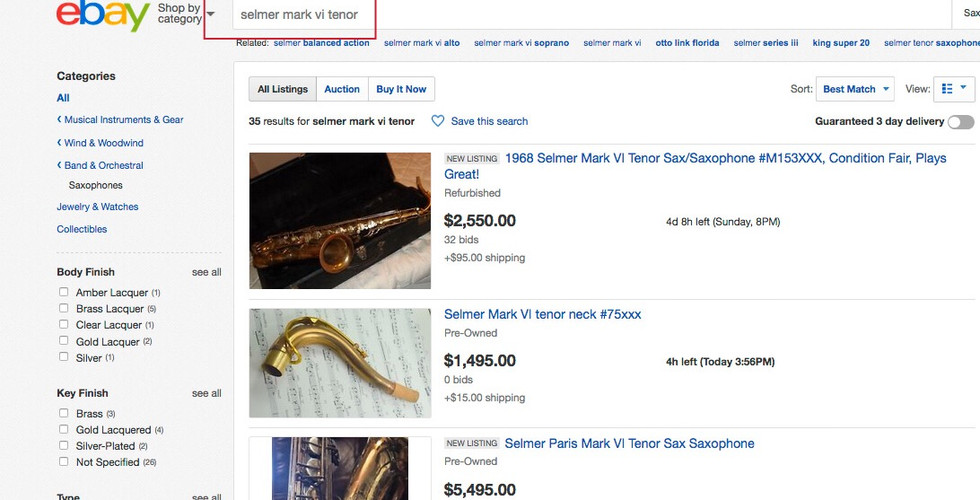
Selling a saxophone is a lot like selling a car. Not only does cosmetic condition affect the value, but mechanical condition and past repairs are of equal importance. This guide should help get you to the right place and give you an idea of how to approach correctly selling a saxophone.

Is it vintage or is it modern? You can start with a simple Google search. The stamp on the bell should give you the manufacturer and the stamp on the body tube will also give you some info including the serial number. A site like www.saxpics.com should help you narrow down what you have and approximately what year it was manufactured. Don't worry too much about the date of manufacture; if you have the serial number, the year is not that important. Date ranges can vary from site to site, so it isn't as accurate as a serial number.
If you have a reputable local music shop or woodwind technician in your area, it's beneficial to take it in and have the repair tech examine it. Not only will they give you possible info on the manufacturer and model, but they will also be able to tell you the current mechanical state of the saxophone, pad age, what it would need to be playable, and a history of past repair and or damage. STOP HERE, DO NOT PAY TO HAVE ANY WORK DONE YET!! 90% of the time it will NOT help you to sell a saxophone by having it re-padded or setup, and you will NOT get extra money. This is probably the most common misconception we deal with. Most players like to buy horns that need work so they can have the work done by their personal tech. This is especially true when it comes to vintage saxophones.

Now that you know a little bit about what you have, you need to find out how much it is worth (approximately). Start with searching eBay for your saxophone and look at the sold listings. DO NOT LOOK AT WHAT THEY ARE LISTED FOR. The other top misconception we deal with: list prices mean nothing except that John Doe decided he wanted that price. This is not an accurate price guide, but sold listings can be.
Go to advanced and click on sold listings. This will give you a rough idea of what the “street” value for your saxophone is. You can also e-mail saxophone shops and ask their opinion as to what your instrument is worth. When doing this, please be upfront and courteous. Don't fish or try and bid saxophone shops against each other. It's a small world and we all know each other! Just simply e-mail some pictures and say that any information on the saxophone as well as approximate values would be appreciated. More than likely there is a $1000 or so range of what your saxophone is worth in the retail world. This may not always be a price range that you want to hear, but we promise we are being as realistic and factual as possible.

From here you have to decide which avenue you'd like to sell through. The options are actually quite simple and include: Craigslist, eBay, Reverb, consign through a shop, or sell whole sale to a music retailer. There are a couple of key points to remember when selling anything of value: The higher the price, the longer it will take to sell. When selling through eBay, Reverb, or consignment there is going be a 10% - 20% fee involved. You will often get a lot of questions, so if you don't feel comfortable answering and dealing with that, then it may not benefit you to sell via eBay and consignment could be a better option.

When selling to a shop, be prepared to take an offer lower than retail price. It takes a LOT of time and money to run a music shop and the profit margins are not nearly as high as they need to be in many situations. Often times that means they are going to make an offer of 20%- 40% off retail price, depending on the brand and model. Remember, there is no guarantee when selling an instrument. The retailer has no clue how long they will have them in stock, exactly how much they will get, etc. So they are taking a gamble in some ways.

Research is absolutely vital to selling anything, and saxophones are no exception. Likewise, it is good to stay open to advice and educated opinions from reputable sellers. Getting the selling process started can be difficult and we hope this guide helps point you in the right direction. Happy selling!





